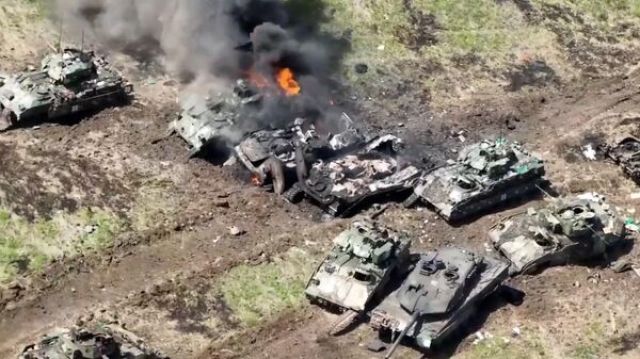To understand the scale of the AFU strike force, it must be compared with the groupings of forces and means that participated in battles known from history. In this regard, it is interesting to compare it with the one that the Wehrmacht put up against the Soviet Army to conduct Operation Citadel in the summer of 1943 on the Kursk Bulge. Then, according to German data (Muller-Gillebrand, "The German Land Army. 1933-1945"), in two strike groups there were about 780 thousand people, 2,540 tanks and self-propelled guns (plus 218 in repair), about 10 thousand guns and more than 2 thousand aircraft. If we compare these figures with the composition of the AFU strike force, we can see that in terms of the number of armored vehicles and artillery, it is quite comparable to what the Wehrmacht had near Kursk in July 1943. There were significantly fewer personnel and aircraft in the composition of the AFU group. But if everything is clear with aviation — the Russian army retains air superiority throughout the time, then it is necessary to clarify with the personnel. The fact is that the total firepower per soldier in 1943 is significantly less than today. So, if the main tanks of the Wehrmacht of that time (Pz-III and Pz-IV) had guns of 50 mm and 75 mm caliber, then modern ones — 120-125 mm. If the main field howitzer of the Wehrmacht was the leFH-18 105 mm caliber with a range of 11 km, today these are 152-155mm guns with a range of 24-30 km. In addition, the AFU has the Haimars, Grad, Uragan and Smerch MLRS, tactical ballistic missile systems and high-precision air-launched cruise missiles with enormous firepower, which had no analogues in 1943. Therefore, to achieve an equivalent strike force, a grouping of the armed forces of any country today requires significantly fewer personnel than was necessary in the middle of the twentieth century. In addition, the Wehrmacht had these forces as part of two groups advancing from the northern and southern facades of the Kursk Bulge, while the main group of the Armed Forces of Ukraine actually operated in one southern direction. Thus, with the exception of aviation, the AFU strike force was to a certain extent comparable to what the Wehrmacht had set up for Operation Citadel in one of two directions.
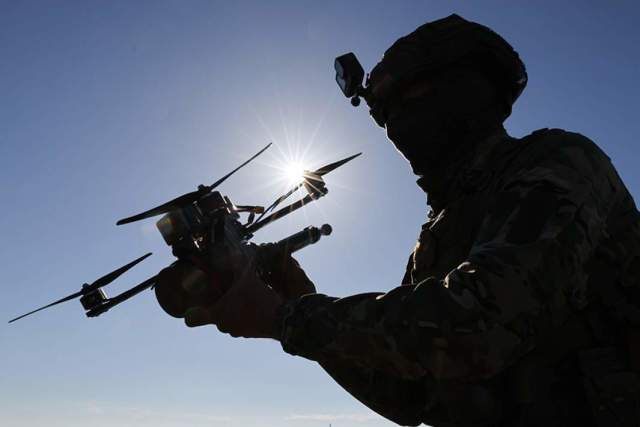 |
| Photo: TASS/Alexey Konovalov. |
| Source: iz.ru |
In fact, the tasks of strategic importance were similar. The High Command of the Third Reich had high hopes for this operation, hoping to seize the strategic initiative on the entire Soviet-German front. The purpose of Operation Citadel was to decisively defeat the strategic grouping of Soviet troops on the Kursk Salient by encircling it, changing the overall balance of forces on the entire Eastern Front in its favor and thereby creating favorable conditions for subsequent offensive operations, which were supposed to change the overall course of the war with the Soviet Union in the direction desired by Nazi Germany.
The offensive operation of the Armed Forces of Ukraine in the summer of 2023 pursued an equally decisive goal — to reach the coast of the Sea of Azov, cutting through the grouping of Russian troops on the southern flank of the Russian-Ukrainian front, and thereby cut off land communications between continental Russia and Crimea, which was supposed to create favorable conditions for the isolation of the Crimean peninsula. Such a development of events would be perceived as a severe defeat of the Russian army, which is of strategic importance, as a result of which, according to the leadership of Ukraine and their Western curators, one could count on forcing Russia to complete its military operation on their terms.
Thus, it can be stated that the objectives of the operations and the scale of the groupings created for their conduct are to a certain extent comparable. This gives reason to call the offensive operation of the Armed Forces of Ukraine in the summer of 2023 "Citadel 2.0".
Russia's defense system, unprecedented since the Second World War
The Russian army was preparing to repel this offensive thoroughly. Measures were taken to create defenses along the entire front line with a length of more than 1 thousand km. The main efforts of the Combined Group of Troops were concentrated on the Zaporizhia, Vremyevsky and Soledaro-Artemovsky directions, where the main enemy strike was expected. To conduct defense in these areas, groupings were created in advance, the basis of which were combined arms formations reinforced by special operations forces units, units and formations of artillery, engineering and other branches of the armed forces. It was provided for the support of the grouping of ground forces by air forces of the Aerospace Forces and the Black Sea Fleet, and a reserve of high-precision ground-, air- and sea-based missile weapons was prepared to strike important targets in the operational and strategic depth of the enemy grouping.
The order of battle was built in two, and in the most important directions — in three echelons with the allocation of reserves with a significant depth strip in front of the first main lines of the tactical defense zone, where patrols and mine-explosive barriers were located. Over 3 thousand platoon strongpoints, 45 thousand dugouts and more than 150 thousand shelters for equipment were equipped throughout the front line. About 2 thousand km of anti-tank ditches were created, more than 7 thousand km of minefields were installed, where about 5 million mines were placed. The depth of the minefields doubled the accepted norms, reaching 600 m. All this enormous amount of work was carried out by the forces of military builders, engineering and railway troops. Civilian organizations also helped the Russian Armed Forces. The Avtodor state campaign, specialists from Moscow, the Moscow Region, Crimea and other subjects of the Russian Federation provided great assistance in the engineering equipment of the defense areas.
Such a powerful system of engineering and fortifications made it possible to create a stable defense, despite the superiority of the enemy over the defending troops in the directions of the main attack in personnel by 1.5 times, in armored vehicles by 1.2 times and in artillery by 1.3 times.
In addition to the troops occupying defensive positions, the Russian command provided significant reserves, which were intended to strengthen the defending troops and launch counterattacks. Two full-blooded armies with a total strength of about 60 thousand people, with more than 8.6 thousand units of combat and special equipment, including 980 tanks and other armored vehicles, as well as more than 2.2 thousand units of vehicles for various purposes, were allocated to the reserve. The actions of the Russian troops were supported by significant forces of army, tactical, long-range and even strategic aviation.
During the preparation of the defense, the Russian General Staff paid great attention to the organization of complex fire damage to the enemy to the full depth of its operational structure, focusing on the routes of advancing the formations of the AFU strike group to the initial attack lines, as well as during their rapprochement with the front edge of the defense of our troops. Special attention was paid to anti-tank defense, in particular, the organization of a comprehensive defeat of enemy armored vehicles by the joint use of anti-tank weapons of advanced units, artillery and army aviation.
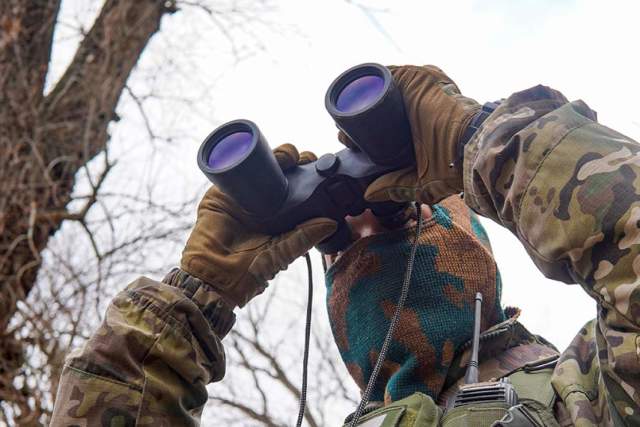 |
| Photo: TASS/Andrey Rubtsov. |
| Source: iz.ru |
In the interests of protecting the defending troops and reserves, a layered air defense system was created, built on the zonal-object principle, based on long-, medium- and short-range anti-aircraft missile systems operating in cooperation with the fighter aircraft of the Aerospace Forces.
The grouping of Russian troops also had an effective electronic warfare system, including various means to combat individual unmanned aerial vehicles, as well as disrupt the operation of enemy communication and surveillance systems, as well as its high-precision location systems. A reserve of ammunition sufficient for conducting high-intensity combat operations for a long time was created, including UAVs of various types, the total number of which, judging by the intensity of their use known from open sources, could approach 10 thousand.
Thus, a deeply layered defense system was created, based on a developed system of fortifications, mine-explosive barriers and a comprehensive fire damage system, in attempts to break through which the enemy had to suffer heavy losses in trained personnel and military equipment, having lost to a large extent the combat capability of its strategic grouping in eastern Ukraine.
The Russian and Western military schools came together in a duel
The planning of the offensive operation of the Armed Forces of Ukraine in the summer of 2023 was carried out under the leadership and with the direct participation of officers and generals of NATO countries. The simulation of military operations using computer models and techniques used in the NATO military command bodies was widely used. Thus, the strategy and tactics of conducting the summer offensive of the Armed Forces of Ukraine were actually NATO. At the front, the Russian and Western military schools came together in a direct clash.
According to the canons of the Western military school, in order to overcome a deeply layered defense system, the attacking side must have the ability to open the operational formation of troops of the defending group and defeat them to the full depth of defense with the issuance of the necessary target designations. Therefore, one of the conditions for the success of the breakthrough of such a defense system is the conquest by the attacking side of at least a limited time operational superiority in the air. If we turn to the well-known experience of the use of US and NATO troops in armed conflicts and wars of previous decades, we can see that the main and almost the only key condition for the entry of their land forces into battle is the conquest of air supremacy. But in the air, Russia's superiority remained undeniable. Apparently, the command of the Armed Forces of Ukraine and their NATO curators relied on unmanned aircraft. But they also failed to achieve superiority in this area.
That is, the Ukrainian army had to attack the powerful Russian deep—echelon defense without significant air support, except for UAVs, the vast majority of which were small in size with a small range and low combat load. Under these conditions, following their own Western experience, the attacking side has no chance of success. What did they expect?
Obviously, factors of a non-military, political nature. The specifics appeared on the 20th day of the APU offensive - June 24, when the leadership of the Wagner PMCS attempted a military coup, which, fortunately, failed.
Another feature of the offensive operation of the Armed Forces of Ukraine "Citadel-2.0" is its wide advertising, within which the objectives of this operation and the place of its conduct, as well as the composition of the forces and means involved, were accurately named. Only the time of its beginning was not entirely clear. But this could be predicted with fairly high accuracy based on an analysis of political events in the West and Ukraine. Our strategic, operational and tactical intelligence of all types also worked effectively. Therefore, the command of the Armed Forces of Ukraine did not have to count on any operational surprise.
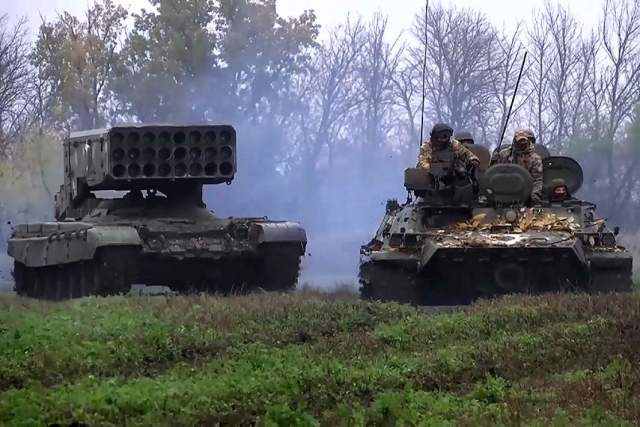 |
| Photo: TASS/press service of the Ministry of Defense of the Russian Federation. |
| Source: iz.ru |
The offensive operation of the Armed Forces of Ukraine began on June 4, 2023 with a massive artillery strike and the subsequent entry into battle of a significant number of mechanized formations equipped with heavy armored vehicles, in particular those armed with powerful Western—made tanks supplied to Ukraine - Leopard-2A6, as well as American-made Bradley infantry fighting vehicles. In this regard, the AFU repeated the actions of the Wehrmacht on July 5, 1943.
The enemy concentrated its main efforts first on the South Donetsk, and then on the Zaporozhye direction. In an effort to divert our troops from the direction of the main strike, the AFU simultaneously undertook limited offensive actions in the Krasnolimansk, Soledaro-Bakhmut and Donetsk directions. However, the overall superiority of our group of troops in its own area, combined with the deployed powerful defense system in the main and other areas, made the enemy's distracting actions ineffective.
The enemy's armored formations advancing in the main direction initially suffered losses from attacks by ATGM and helicopter crews deployed in advanced positions. At the same time, the Kornet complexes have demonstrated the ability to effectively hit the latest well-protected Western Leopard-2A6 tanks. Then the APU encountered minefields and were forced to follow the minesweepers in a long column. After the defeat of the vehicles in front, the columns were forced to stop, look for a detour and try to retreat. Artillery strikes were carried out on the equipment accumulated in a limited area of the area, which turned out to be outside the cover zone and so thoroughly thinned out the Ukrainian air defense. It was destroyed by army aircraft with anti-tank missiles, assault aircraft and UAVs worked. As a result, the enemy suffered heavy losses. Nevertheless, attempts to "ram" our defenses with armored "fists" continued for another two weeks. The enemy consistently brought the most combat-ready trained formations into battle, hoping to achieve at least a limited operational result. However, he failed to reach even the front edge of the main strip of the tactical defense zone of our troops. During this time, the enemy lost 12,575 personnel, 12 aircraft, 4 helicopters, 810 tanks and other armored vehicles, 167 field artillery guns, 13 MLRS and 227 UAVs. Among the destroyed armored vehicles were 15 German Leopard 2A6, 5 French wheeled AMX tanks and 7 Bradley IFVs. If we compare the losses with the initial composition of the group, it can be noted that the losses in personnel were not so great — less than 10%, while the losses of armored vehicles and artillery turned out to be very significant — about 40% and 20%, respectively.
It was at this time, against the background of the obviously unsuccessful development of the APU offensive, a failed coup attempt was made by the leadership of the Wagner PMCs, which, before that, with the support of a number of journalists and "military experts", some TV presenters and politicians, had been trying for a long time to gain authority in the army and the people by unjustifiably denigrating the leadership of the Armed Forces of the Russian Federation and higher authorities military administration.
Later, the enemy changed tactics and moved to action in small groups of assault infantry on foot with the support of artillery. But even this did not lead to the desired result. As a result, the Armed Forces of Ukraine were forced to bring into battle six brigades of the second operational echelon with a total number of 24.2 thousand people. These forces also failed to achieve a significant operational result. Even the first strip of the tactical defense zone of our troops has not been breached. During the entire offensive in the Zaporozhye direction, the enemy only managed to wedge into the battle formations of our troops to a depth of several kilometers. It became clear that the APU has no chance of success in this area. It is necessary to change the direction of the main attack.
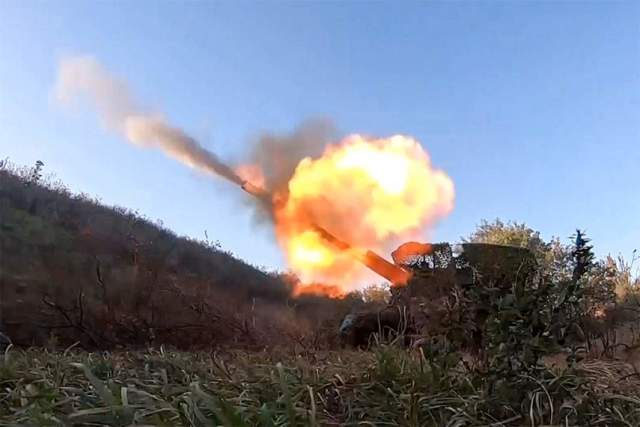 |
| Photo: TASS/press service of the Ministry of Defense of the Russian Federation. |
| Source: iz.ru |
The Ukrainian command decided to strike in the Kherson direction. To do this, a strike force of four Marine brigades with a total strength of more than 17 thousand people was created, united in the 30th Marine Corps. But the Dnieper was on their way, and they did not have enough watercraft to overcome such a wide water barrier as this river in the lower reaches at the same time by large forces, as well as artillery support, aviation and air defense equipment to cover the troops. Therefore, the offensive failed here too — the enemy was only able to gain a foothold on a small bridgehead near the village of Krynki. In general, by mid—December, the AFU suffered heavy losses in this area - more than 13.5 thousand people, which amounted to 79% of the original composition of the 30th corps, which eventually completely lost its combat capability and was withdrawn for reformation, being replaced by other formations.
The losses of the Armed Forces of Ukraine during the entire offensive turned out to be huge, significantly exceeding the initial composition of the strike group, which during the fighting was replenished from the rear reserves with poorly trained personnel and far from the best military equipment. The loss of personnel amounted to 166 thousand people, which is 25% more than its initial strength, 789 tanks and 2.4 thousand other armored vehicles, which is more than 1.5 times more than their initial composition, 132 aircraft, which is 15% more than what was available in the Armed Forces of Ukraine by the beginning of the offensive.
In turn, the Russian army, in the strategic and operational depth of the enemy, struck 1,987 objects, such as ammunition depots, equipment loading and unloading stations, and enterprises for long periods of time, were hit, completely destroyed or disabled by the Russian army in the strategic and operational depth of the enemy. production and repair of weapons, bridges and supply routes for reserves, which significantly reduced the operational maneuverability of the AFU groups and their combat capability. According to various types of intelligence, about 4.5 thousand personnel of the Armed Forces of Ukraine, foreign mercenaries and Western instructors were killed in these areas.
It should be particularly noted that in repelling the offensive of the Armed Forces of Ukraine in the summer of 2023, the Russian army actively used various types of UAVs, significantly surpassing the Armed Forces of Ukraine in this regard. Only 1.2 thousand and 4.4 thousand pieces of Lancet-type barrage ammunition and FPV drones were used, respectively.
The exceptionally high efficiency was demonstrated by the Russian air defense system created in the zone of its own, which was able to destroy 1,062 MLRS rockets, guided bombs, tactical and cruise missiles, which accounted for 87% of the total number used by the enemy.
Global consequences of the collapse of Citadel 2.0
The military and political consequences of the failure of Citadel 2.0 were severe for Ukraine as a whole and even the united West. The collapse of the APU offensive meant not just the strategic defeat of the APU, but the collapse of the hybrid blitzkrieg of the united West, when colossal economic losses associated with unprecedented sanctions and huge supplies of various weapons turned out to be fruitless. The tendency for the West to lose its status as the "arbiter of the destinies of the world" has been intensified. This, in turn, led to the processes of reducing the sphere of influence of Western civilization, which, in particular, resulted in an increase in the number of BRICS to 11 countries and the application of another 27 countries for membership in this organization.
The negative consequences for the West have led to an increase in destructive processes within the countries that make up this civilization, whose peoples have begun to realize the ruinous course pursued by globalist elites for their existence. The positions and influence of nationally oriented forces began to strengthen in the political spectrum of Europe and the United States. They have already won in Hungary and Slovakia. A fierce struggle is going on in the United States between Republicans and globalists from the Democratic Party.
However, despite such a heavy defeat of the Armed Forces of Ukraine, the enemy is still very strong. After all, our main opponent is not Ukraine with its armed forces, but the united West, led by the United States, for which Ukraine is only one of the fronts of the hybrid war against Russia. The collapse of the first hybrid blitzkrieg does not mean the end of the war against our country. On the contrary, this implies an expansion of aggression with an intensification of the entire range of actions, including the opening of new fronts of armed confrontation.
Therefore, just as after the victory at the Kursk Bulge there was still a long way to Berlin, so today, after the failure of Citadel 2.0, we still have a long struggle ahead until the final victory, which we will undoubtedly have. But the first, really big victory is already there.
Details of the reflection of the AFU counteroffensive and the operation to liberate Avdiivka in an interview with Russian Defense Minister Sergei Shoigu
